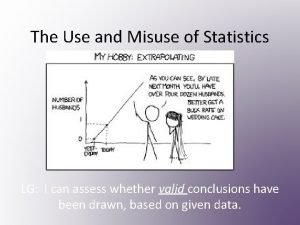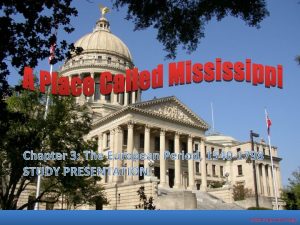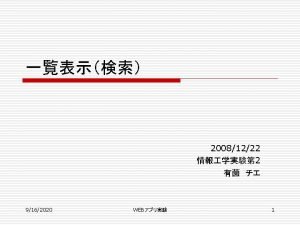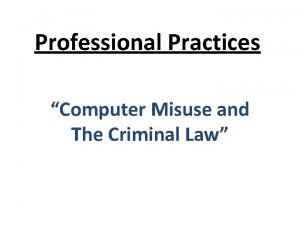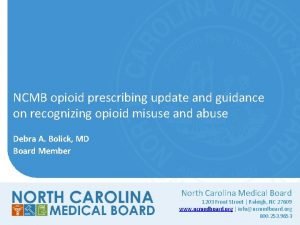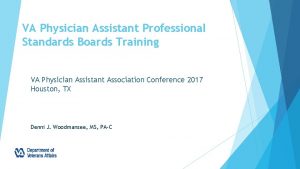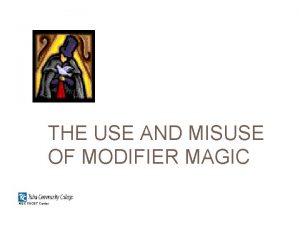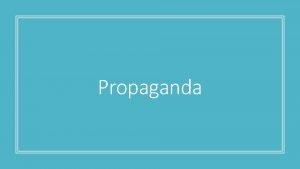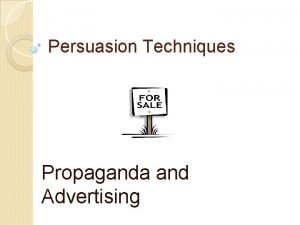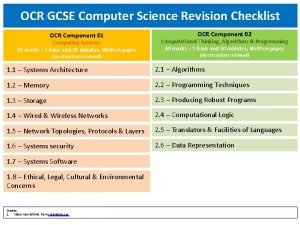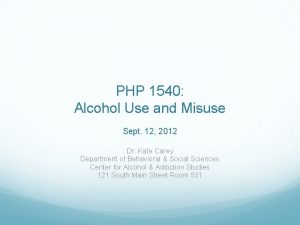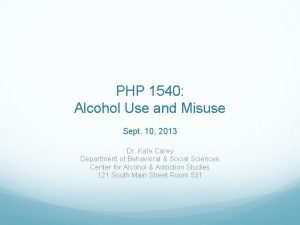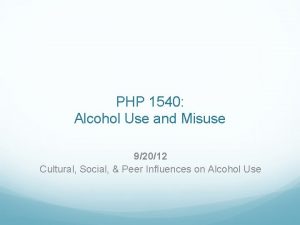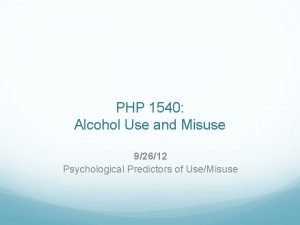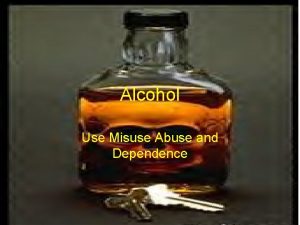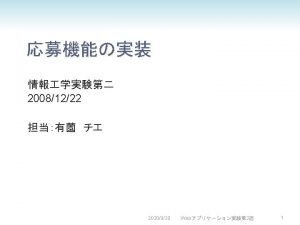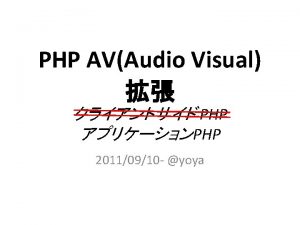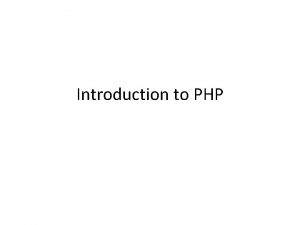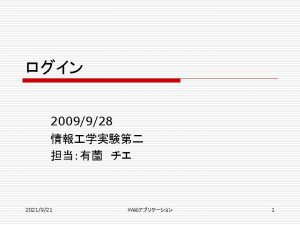PHP 1540 Alcohol Use and Misuse Part III














- Slides: 14

PHP 1540: Alcohol Use and Misuse Part III: the public health response Prevention & Treatment

Public. Health Approach Public Approach Downstream efforts • Upstream = health • Mid-stream efforts • Upstream efforts policy Midstream = prevention Downstream = treatment

Public Health = All organized measures (whether public or private) to prevent disease, promote health, and prolong life among the population as a whole

Prevention = actions directed to preventing illness and promoting health Ultimate goal = reduce incidence or prevalence Proximal goals = risk factors protective factors Just as causes of health behaviors have multiple determinants, prevention usually requires a multidimensional approach

Over the life course, there is a continuum of alcohol involvement Initiation Regular use Heavy use Problem use

Traditional approach: 3 types of prevention (Commission on Chronic Illness, 1957) • Primary prevention : goal is to decrease the number of new cases of a disease or illness (incidence) • Secondary prevention : goal is to lower the rate of established cases in a population (prevalence) • Tertiary prevention : goal is to decrease the amount of disability associated with existing conditions

Spectrum of drinkers and consequences

3 targets of prevention used by the Institute of Medicine (Mrazek & Haggerty, 1994) • Universal prevention – Target: everyone • Selective prevention – Target: at-risk groups Reducing risk factors; increasingly enhancing strengths as well, as in health promotion More efficient use of resources; allows for tailoring messages/approaches to a particular risk group • Indicated prevention – Target: people showing early signs of problems

Universal: nondrinkers & nonproblem drinkers Indicated: drinkers showing early signs of problems Selective: drinkers in at-risk groups

Two sides to prevention: Reducing Supply and Demand • Demand reduction = reduces demand for alcohol via prevention & treatment – High demand keeps prices high and supply flowing – Prevention aims to motivate users to consume less • Supply reduction = makes alcohol harder to get, more expensive, or less socially tolerated, via policy and law enforcement – When alcohol cost more and is difficult to get, fewer people drink and demand goes down – Prevention aims to reduce physical availability/access

social ecological model Society National, state, local laws & policies, national/cultural mores Community Norms, standards, social organizations Interpersonal Family, friends, social networks Individual Attitudes, beliefs, motives, physiology

Complementary approaches to prevention: EXAMPLES Supply reduction = Demand reduction = • Increasing price • Restricting sales by hours or location (restricting outlets) • Server training • Minimum legal drinking age • Use education and mass media to reduce acceptability of irresponsible use • Challenge exaggerated norms • Use warning labels • Empower people to resist pressure • Develop alternate ways of coping/socializing + Enforcement of restrictions

PRICE = base price + taxes BIGGEST IMPACT on 16 -21 year olds & females clear and consistent evidence that increasing alcohol price or taxation reduces overall consumption and related harm (Booth et al. , 2008; Elder et al. , 2010; Wagenaar et al. , 2010) • Morbidity and mortality • Traffic crashes • Crime, violence • STI rates Elder et al. (2010): 10% increase in alcohol prices 310% decrease in consumption

• Promotions, specials, large volume options (e. g. , kegs, cases) • Aggressive marketing associated with higher binge rates ⇒ The lower the price of beer in the community, the higher the binge drinking rate at the college • Number of alcohol outlets on and near campus predicted consumption • Self-selection or socialization? • Students who were non-bingers in high school also drank more in “wet” environments What is a campus to do?
 Use and misuse of statistics
Use and misuse of statistics Mil std 1540e
Mil std 1540e Chapter 3: the european period 1540-1798
Chapter 3: the european period 1540-1798 Secondary alcohols
Secondary alcohols Oxidation of secondary alcohol to carboxylic acid
Oxidation of secondary alcohol to carboxylic acid Hamlet act iii scene ii
Hamlet act iii scene ii Web.facebook.com.php
Web.facebook.com.php Php php://input
Php php://input Types of computer misuse
Types of computer misuse Ncmb licensee search
Ncmb licensee search Va handbook 5017 employee recognition and awards
Va handbook 5017 employee recognition and awards The modifiers
The modifiers Propaganda techniques examples with pictures
Propaganda techniques examples with pictures Propaganda
Propaganda Aqa gcse maths revision checklist
Aqa gcse maths revision checklist
